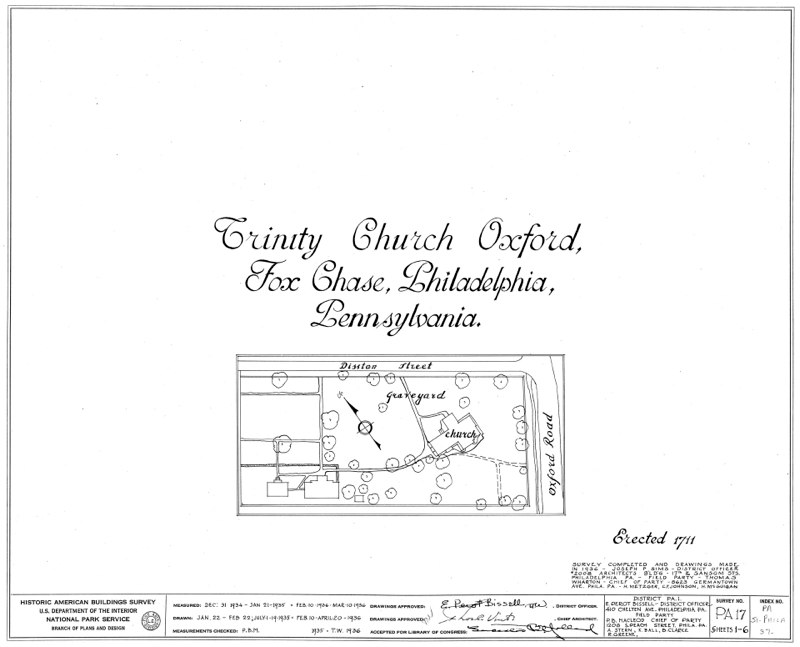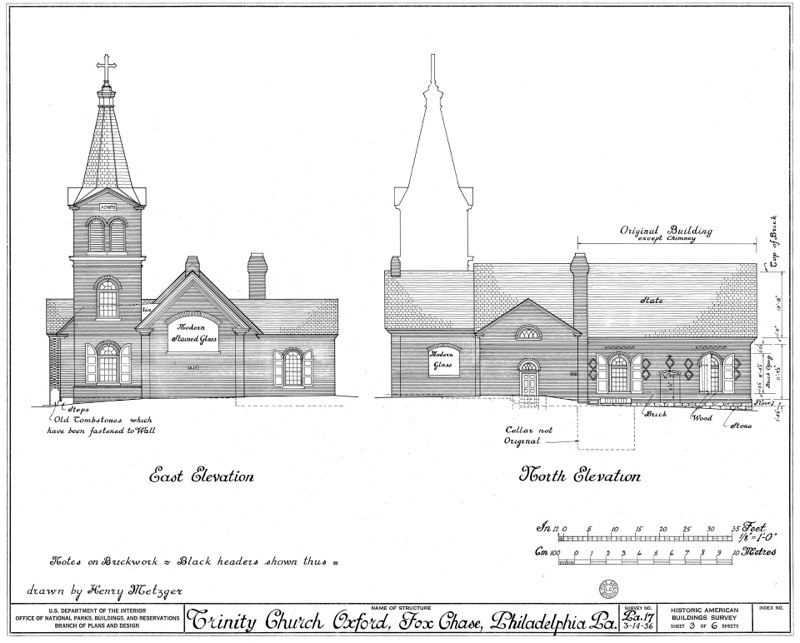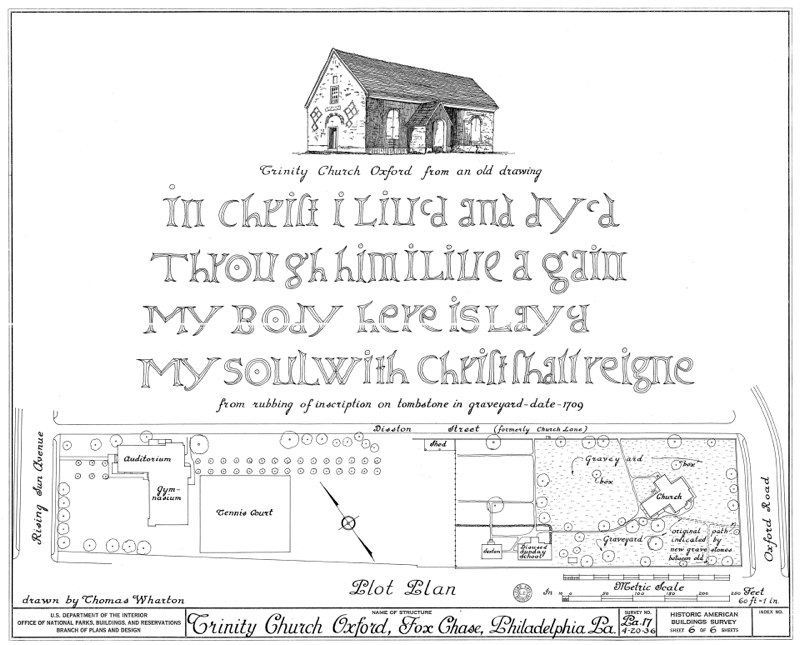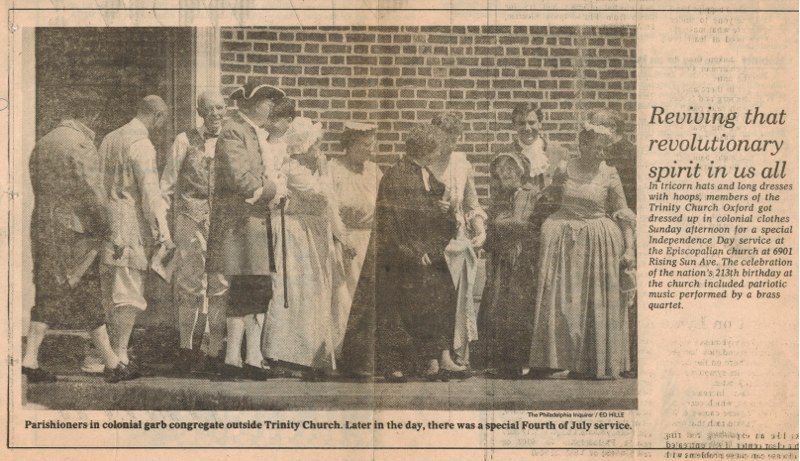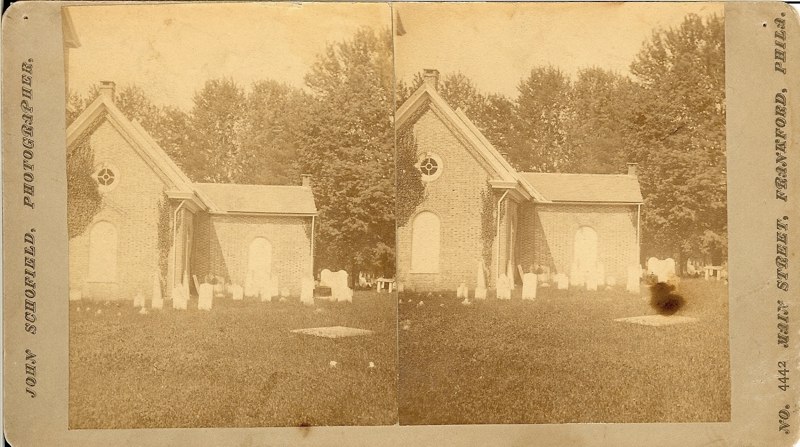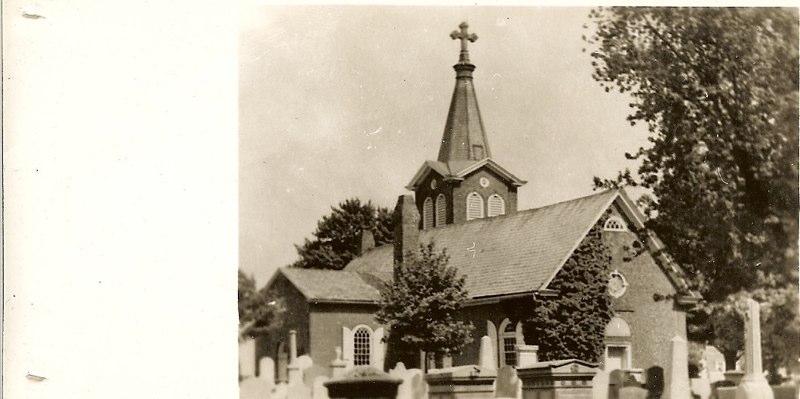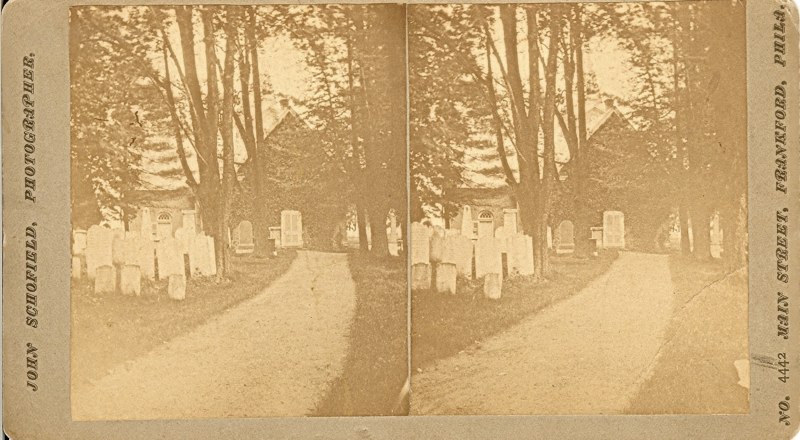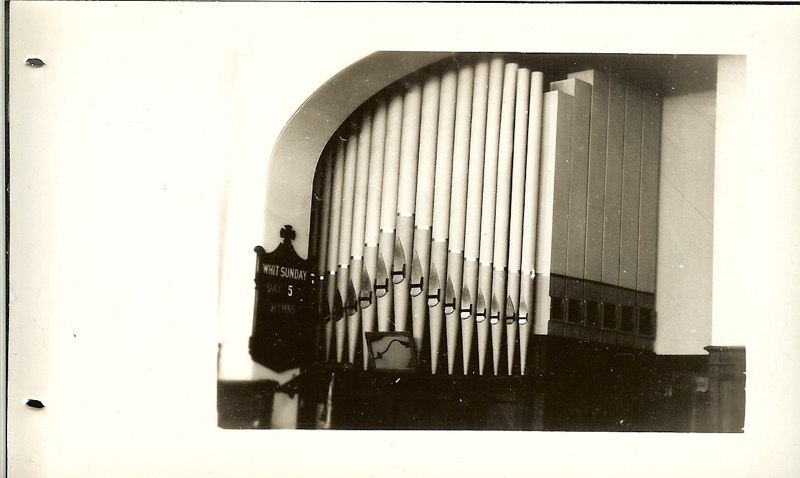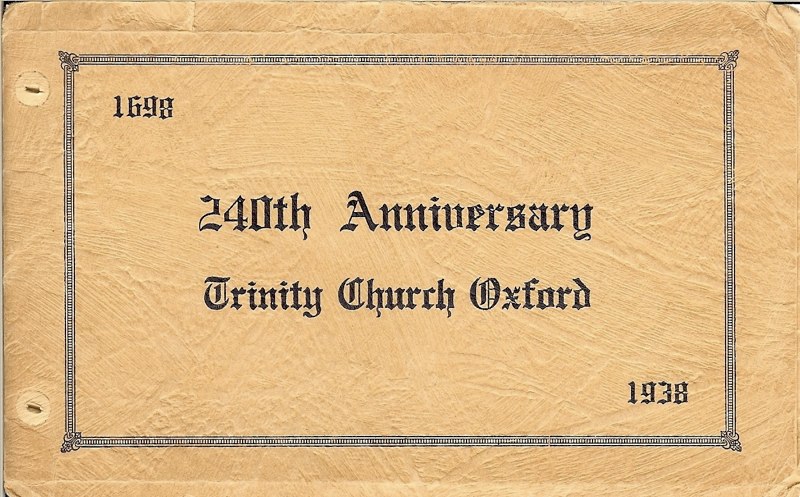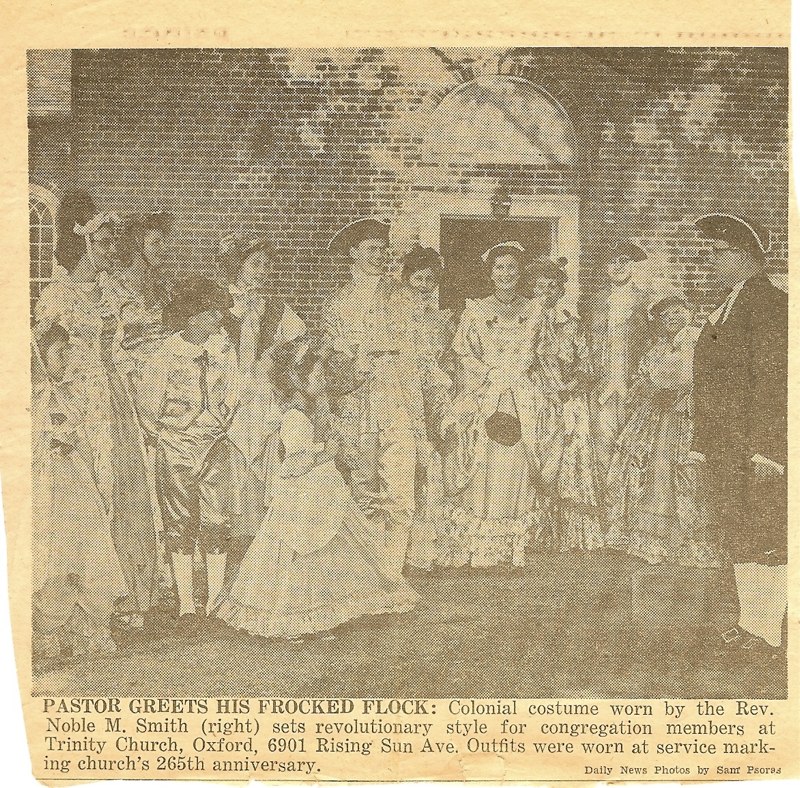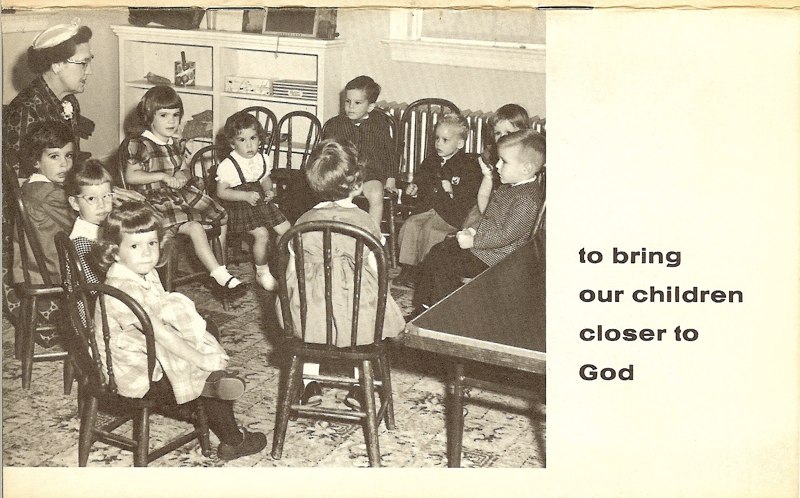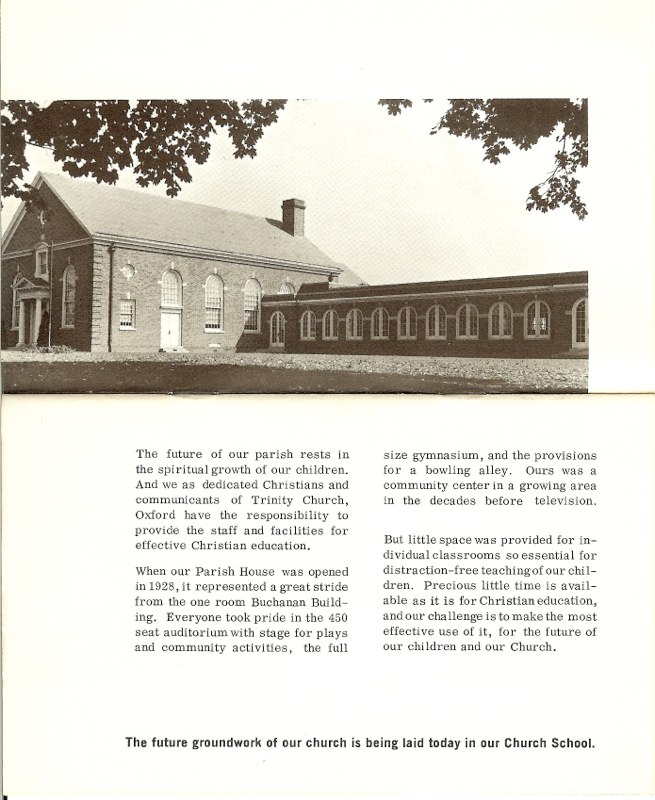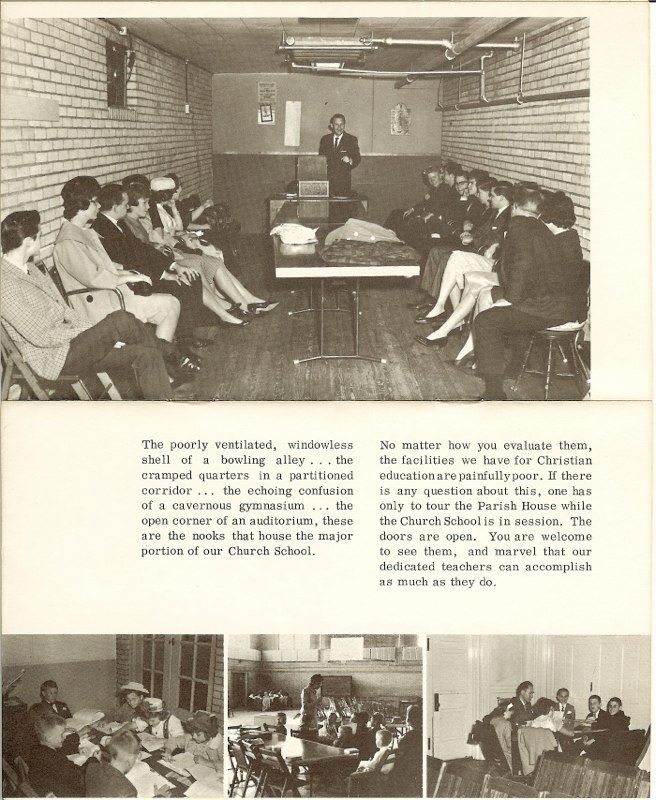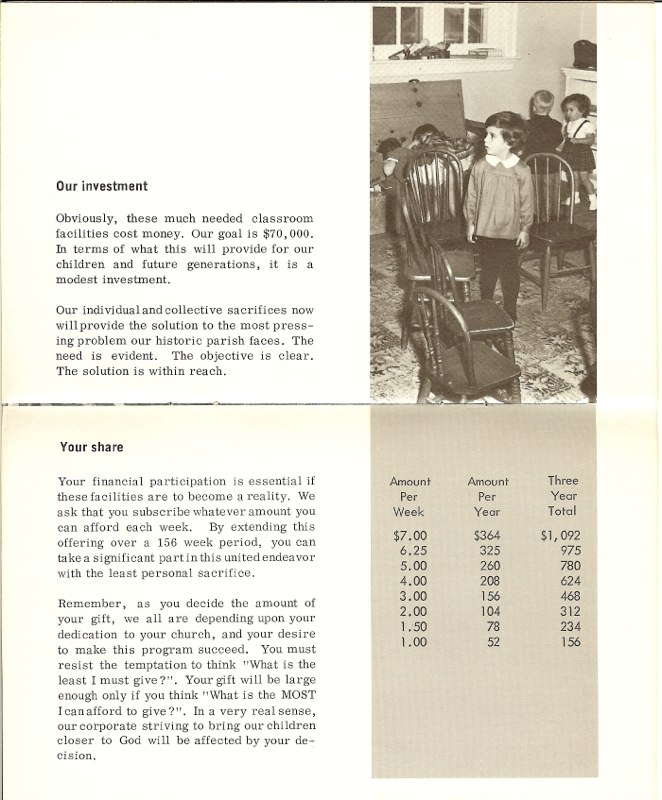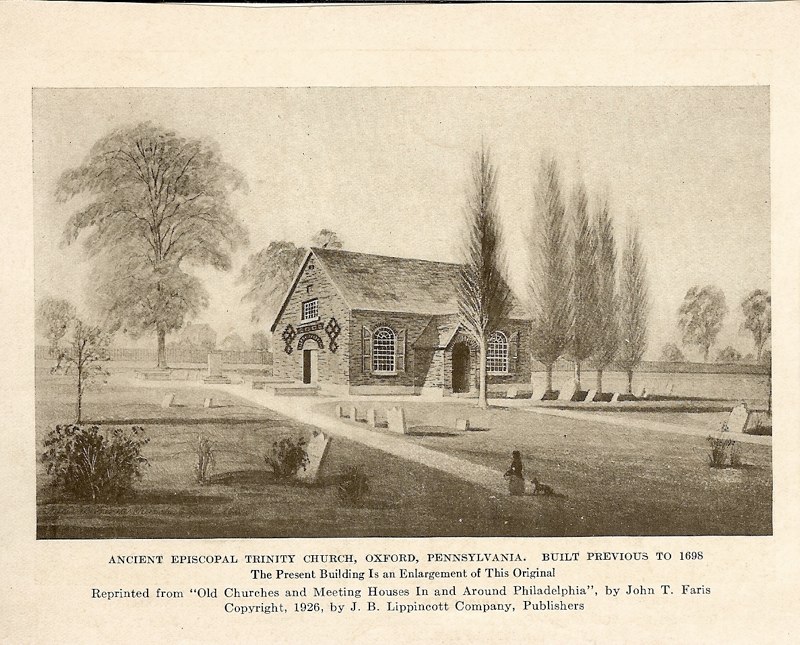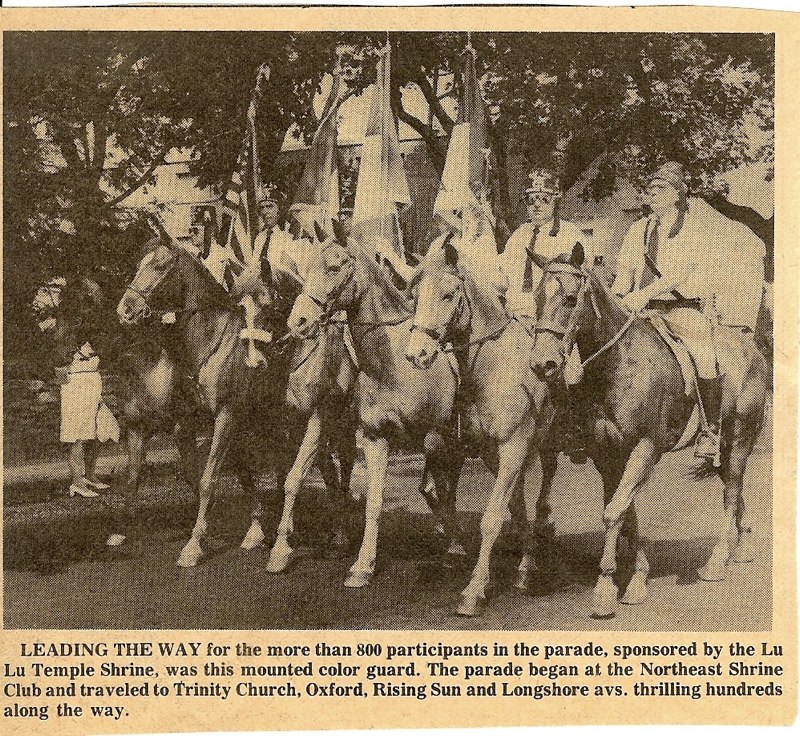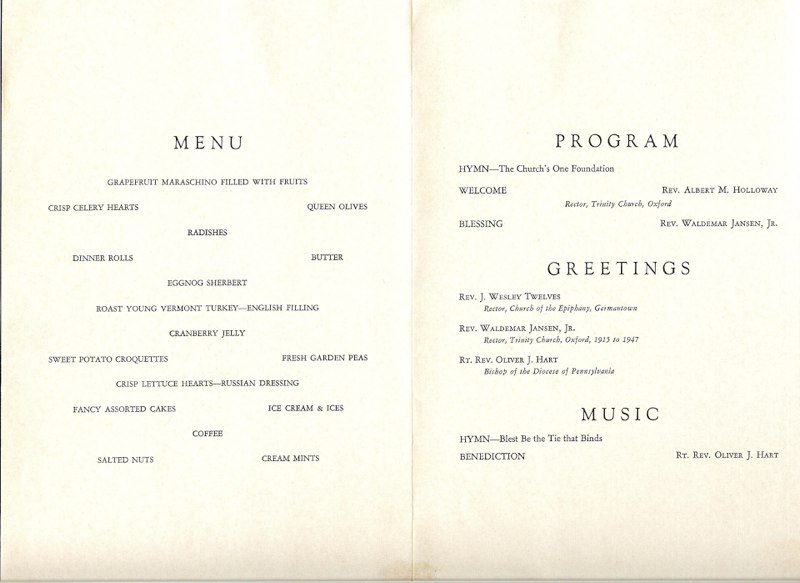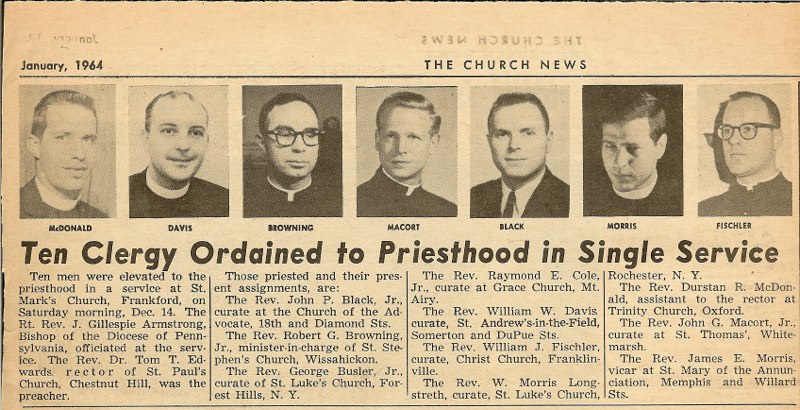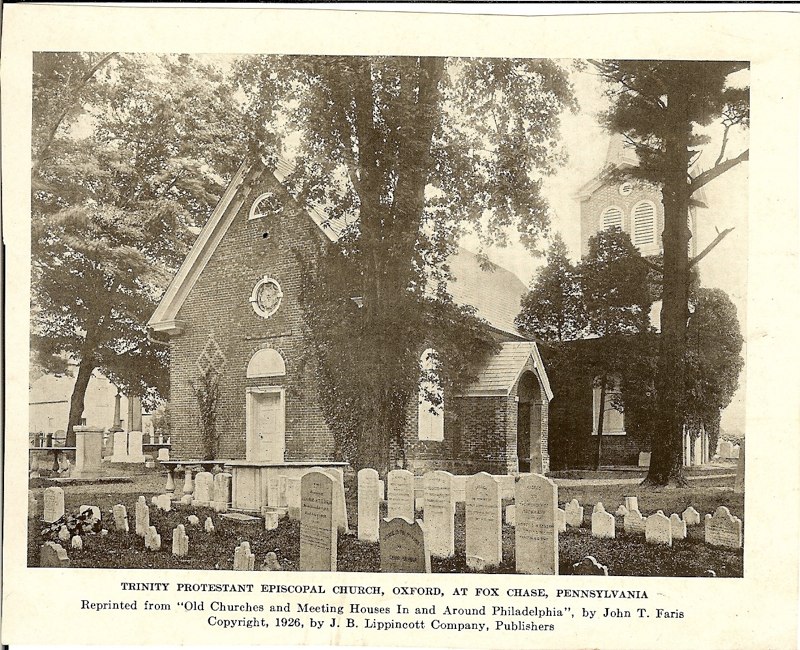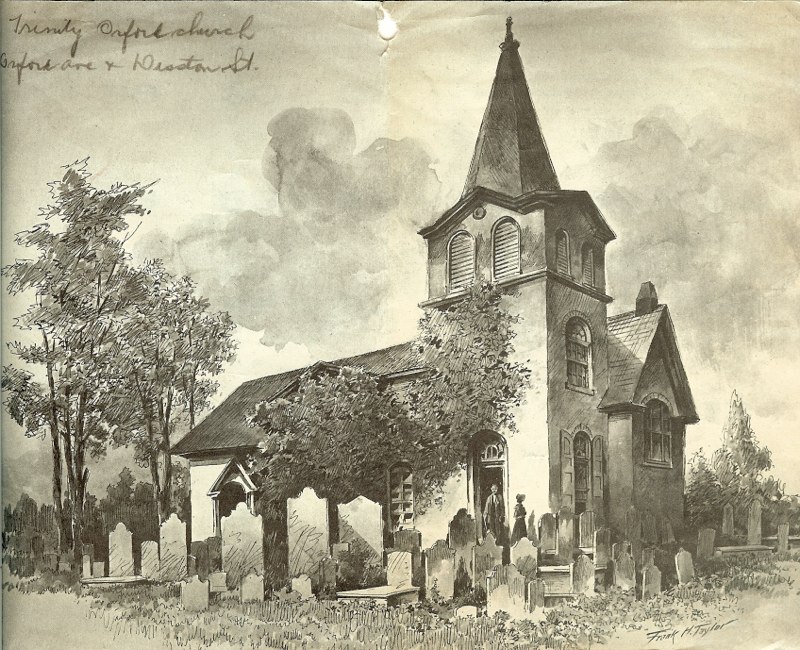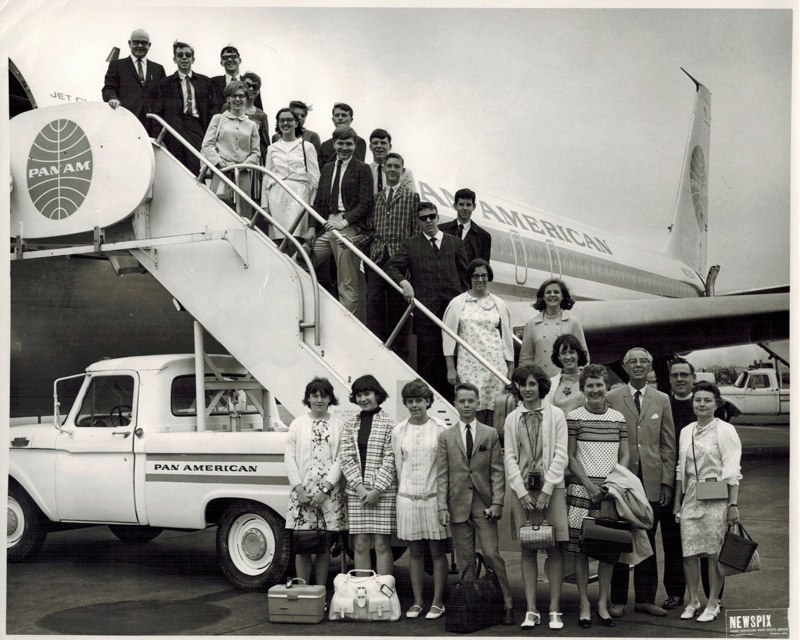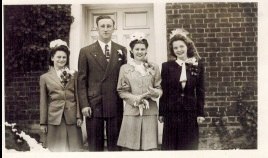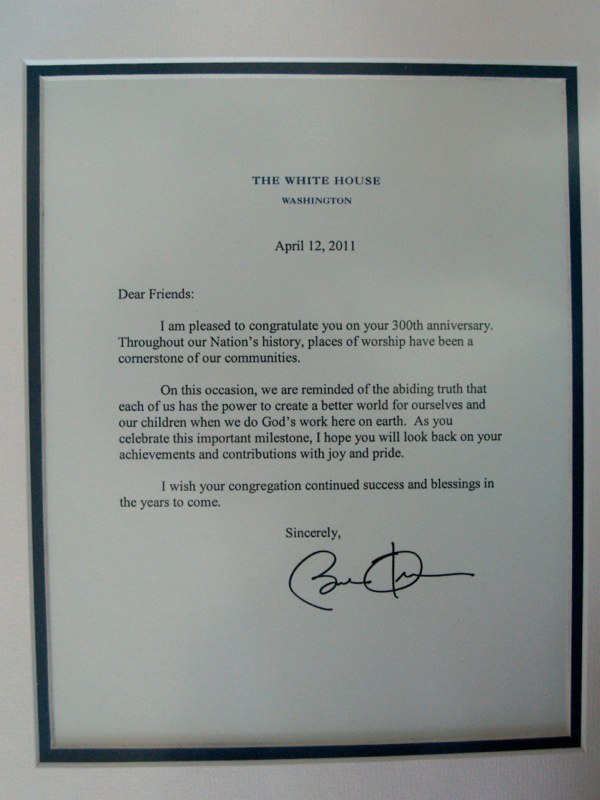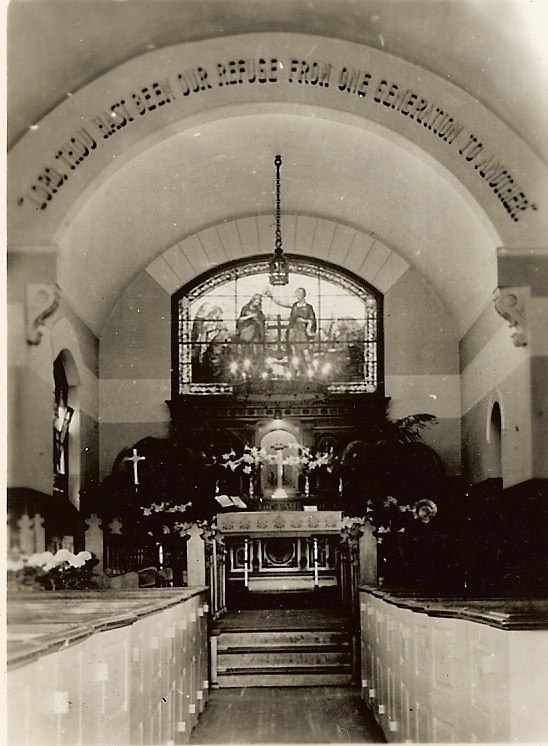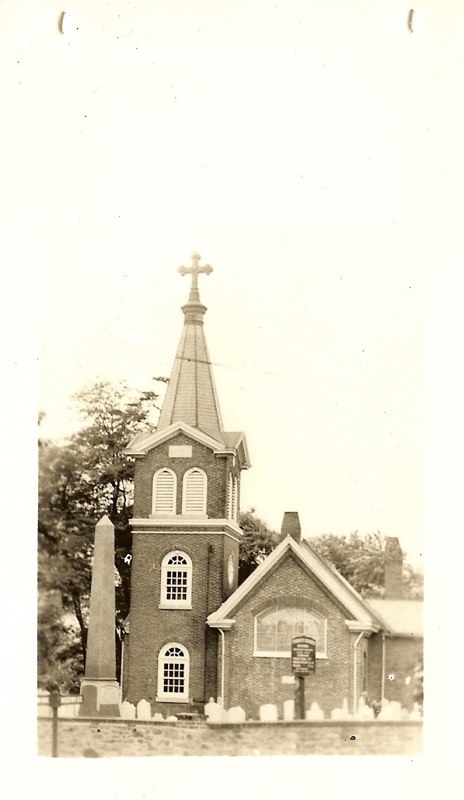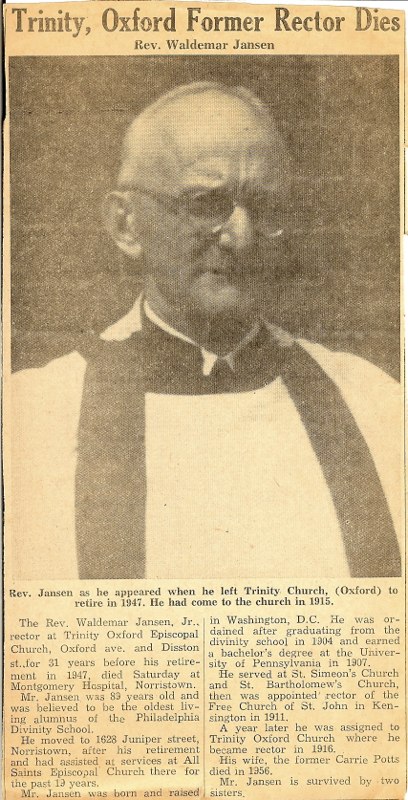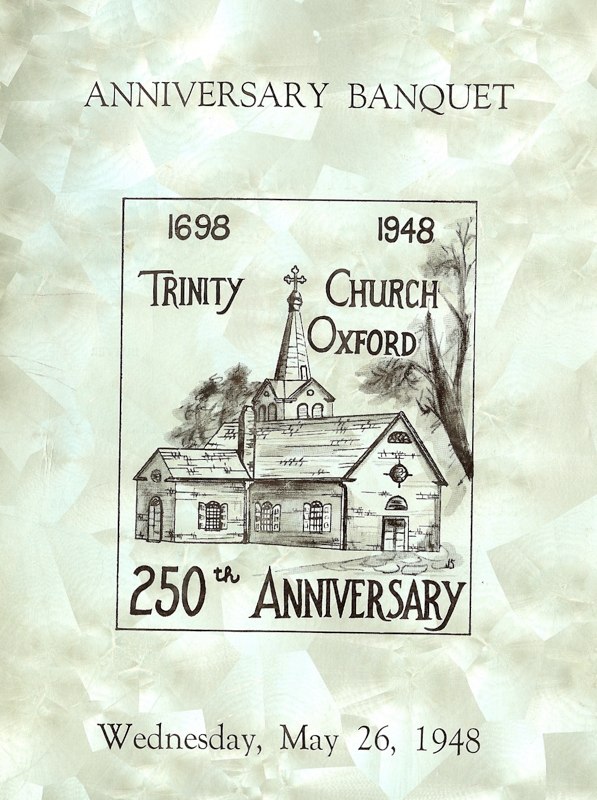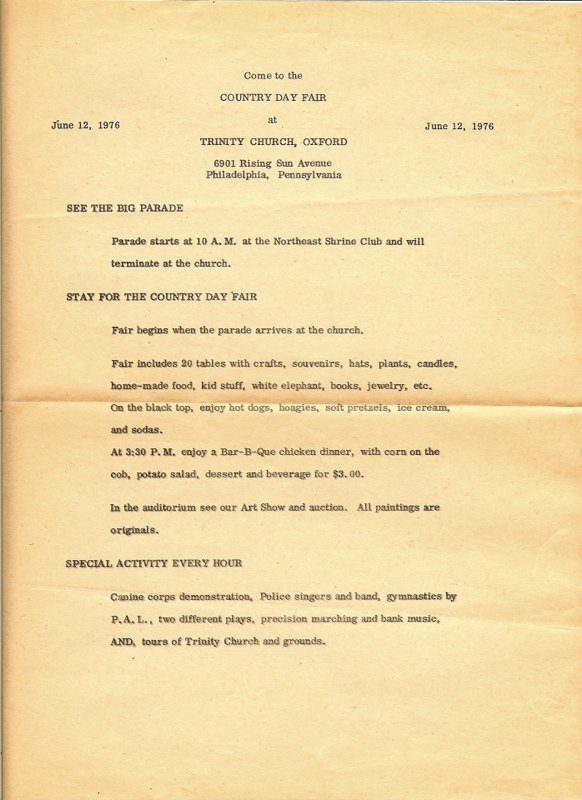Founded in 1696. Church Erected in 1711.
Our Founding
Trinity Church Oxford is one of the oldest churches in the country. A marble stone in the west wall of the Church states that Church of England services were first held on this site A.D. 1696 in a log meeting house that had belonged to the Oxford Society of Friends.
We have in our possession the original deed dated January 30, 1700 in which Thomas Graves conveyed three acres of land to Joshua Carpenter and John Moore in trust of Oxford Church, which were to be for "the use and service of those of the communion of our holy mother, the Church of England, and to no other use or used whatsoever".
A new church building was erected in 1711 with bricks most probably imported from England. Its dimensions were 25 feet wide by 35 feet long, being the western end of our present building. For many years however, it was without either pews or floor, and for a still longer time without any facilities for heat.
A solid silver communion chalice was presented by Queen Anne of England to the church in 1713, as a token of her love for this new colonial church.
The 18th Century
In the 18th century, several of our rectors had ring-side seats in national affairs:
The Rev. Aneas Ross (rector 1742-1758) was the father-in-law of Betsy Ross, who made the first "Stars and Stripes", and the brother of George Ross, a signer of the Declaration of Independence.
The Rev. Dr. William Smith (rector 1766-1779, 1791-1798) founded what is now the University of Pennsylvania.
After Independence, Trinity played a role in the new Protestant Episcopal Church. In 1784 Mr. Benjamin Cottman represented Trinity at a meeting with the Rev. William White to organize the Diocese of Pennsylvania. Trinity was admitted into Convention in 1786. The Rev. John Hobart (rector 1798-1801) became Bishop of New York and founded Hobart College.
The 19th Century
In the mid-19th century, the Rev. Edward Buchanan (rector 1854-1882) was the brother of President James Buchanan, and Trinity numbered many prosperous industrialists among its members. In the latter part of the century, Frank Furness designed additions to the Church and the interior was decorated with Tiffany windows and elaborately carved woodwork. The Buchanan Building was erected for the Church School.
The 20th Century & Beyond
In the twentieth century, the farms and gentry of the area gave way to middle class homes and working people. During the long rectorships of the Rev. Waldemar Jansen (1915-1947) and the Rev. Dr. Noble M. Smith (1961-1990), the Parish House on Rising Sun Avenue was built in 1928 and expanded in 1962 for use as a community center. It currently houses the church office and is used by the Police Athletic League.
As we plan for the future, the Church seeks to preserve its legacy for generations to come. Work has been completed on our new church office, located in the former sexton's cottage at 601 Longshore Avenue. The redevelopment committee has also completed its search for a suitable tenant and developer of the 6901 Rising Sun Avenue property. The Vestry has decided to pursue necessary rezoning in order to make the property more attractive to prospective tenants.
Images Of Our History
